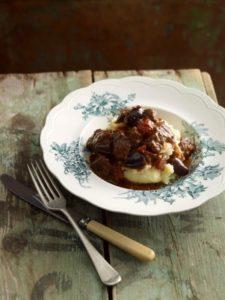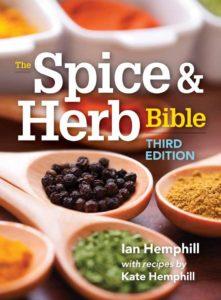Humanity has had a long relationship with various herbs, spices and plants as regards to their medicinal properties. At the root of many common over-the-counter tablets are compounds from herbs and plants. Research recently published in the Journal of Herbal Medicine (official publication of the National Institute of Medical Herbalists) gave more indication that six plants found in Borneo are potential therapies for various diseases. The plants were individually screened for antimicrobial and antifungal effects using their crude extracts and were found to inhibit a broad range of pathogenic micro-organisms.
Commenting on the research, Laura Stannard, President of the National Institute of Medical Herbalists*, has commented, “Research is continually showing the important and valuable role medicinal plants play in supporting us through illness. Wherever we look in the world we find herbal medicine is used to help people get well and stay well. With the approaching crisis in antibiotics it makes sense that health professional give serious consideration to the antimicrobial protection offered by medicinal plants. Medical herbalists have used medicinal plants to combat infections for hundreds of years. Many less serious infections are amenable to treatment with herbal medicines. A medical herbalist can work with patients to improve general health and well-being with the aim of reducing their susceptibility to infections. This means that our important antibiotics are available for more serious and life threatening infections. Herbal medicine has the potential to transform the current bleak outlook and constitutes a significant untapped resource to combat disease.”
*The National Institute of Medical Herbalists is the UK’s leading professional body representing herbal practitioners, maintaining a register of individual members, setting the profession’s educational standards and running an accreditation system for training establishments. It was first established as the National Association of Medical Herbalists in 1864 and celebrates its 150th anniversary in 2014.
As well as the proven (and potential) medicinal application of herbs (either ingested or in the form of aromatherapy for creams, bath oils or even poultices many of us keep a few herbs on a windowsill for the express purposes of adding to our foods in order to up the flavour while avoiding any uplift in blood sugar levels. In the last issue we took a long look at cinnamon and its apparently moderating affect on blood glucose levels especially in Type 2 diabetes.
The great thing about herbs and spices is that they can add so much to a dish without adding sugar or salt, and there are endless possible combinations, thought some of the tried-and-tested are the best!
Spice and herb bible
Writer of the Spice and Herb Bible, Ian Hemphill, says that “Cooks use spices and herbs not only to enhance food’s flavour, but also to create new taste combinations and sensations. From bay leaves to lemongrass to vanilla beans, it is virtually impossible to imagine a well- stocked kitchen without herbs and spices.”
Ian is based in his native Australia where he runs Herbie’s Spices, which boasts the largest selection of herbs and spices for sale and export in the Southern Hemisphere (you can see more info here www.herbies.com.au). HIs mother, Rosemary Hemphill was the first Australian to have a book published on herbs and spices in 1959. Her later book, The Penguin Book of Herbs and Spices was on the Penguin ‘Must Stock” list for over 12 years and in the UK and Australia sold over 300,000 copies. Hemphill’s daughter and contributor to the book is Kate Hempill, a trained chef who has worked as a home economist, food stylist, recipe writer and cookery teacher and who resides in London.
The latest edition of his book (the revised 3rd edition) is an authoritative guide, describing a wide range of global herbs and spices used in our kitchens daily. He demystifies the art of combining herbs and spices, and introduces a world of flavours featuring six new spice entries, bringing the total number of entries up to 97. Within its pages are 33 new curry spice blends and 17 new spice blends. The spices and herbs are listed alphabetically, and there is a detailed colour photo of them, including comprehensive information on storing and using each herb and spice. There are also102 new recipes.
The heat is on
Hemphill says, “When it comes to fast, economical and easy to prepare meals, my position is that people should be encouraged to add herbs and spices to the kinds of meals they are comfortable with making. All meals made with natural, unprocessed foods and using minimal amounts of salt and sugar, can taste great and be satisfying with a little spice. There are many easy and delicious recipes such as vegetarian sambar, Puttanesca pasta, grilled chicken satay, Ras el Hanout chicken or spicy fried cauliflower – recipes for which are inside the Spice and Herb Bible.”
He also notes that it can take time to really find your feet with spice combinations. “Be prepared to experiment,” he advises, “It helps if you start with a recipe or have some guidance as to the quantity to use. Don’t just buy the cheapest spices you can get, as in most cases you get what you pay for and cheap spices are often old, may be contaminated with allergens or worse, adulterated with fillers, so buy small quantities regularly. Spices that are not used regularly or in large quantities, or have very strong flavours – cloves for example — are best purchased whole and then ground in a mortar with a pestle when required. As spices and dried herbs get their flavours from the volatile oils that are contained within the cell structure of the material, whole ones last longest — about three years. Once ground, a spice only retains its optimum flavour for about one year.”
Future perfect
Hemphill advocates the fact that people can use spices as an alternative to salt and sugar, and therefore be healthier. He says, “Replacing excessive amounts of salt, sugar and fats with spices is one of the easiest ways to truly enjoy healthy food. We often have customers come to our store who have been told by doctors and dieticians to use spices, not for the spices medicinal properties, but to simply make healthy food tasty, enjoyable and satisfying.”
Hemphill’s tips for spice trends in 2015 are that there will be a focus on fresh, healthy ingredients spiced with combinations of herbs and spices used in the Middle East and North Africa. He also tips that authentic Mexican and South American flavours (not supermarket Tex-Mex offerings) will be on the rise. “Cooks can now make dishes like Mole Poblano using Ancho, Pasilla, Mulato and Chipotle chillies.” When asked what he deems the most underused spice/herb in the world, he says it is Ajowan, a tiny seed used in Indian cooking. “It contains a higher percentage of Thymol than the herb thyme,” he says, “and gives both a herby and spicy note to all carbohydrates and is great with vegetables.”
RECIPES
With thanks to Ian Hemphill, Katy Hemphill and the Spice and Herb Bible, we have three recipes available. The first is for Baharat beef with olives. Then, as seen on the opening spread of this feature is a recipe for Indian Butter Chicken. In addition there is the recipe for Pho soup. Please email us at spicerecipes@desangstaging.wpengine.com to request these.
This news item first appeared in Desang Diabetes Magazine, our free-to-receive digital journal. We cover diabetes news, diabetes management equipment (diabetes kit) and news about food suitable for a diabetic diet. Go to the top of this page to sign up – we just need your email address.






